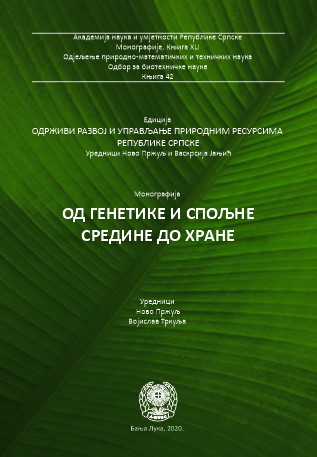The Global natural factors that are limiting the plant production
DOI:
https://doi.org/10.7251/EORU2001001JKeywords:
Land, land types, agricultural land, arable land, crop production, cereals, average yieldsAbstract
Agricltural areas of the world occupy 37.67% of the total land area. Areas suitable for agricultural production are very small – it has been cultivated only 10.89% of the land area in the world, whereas only 3% is highly productive and large parts of the areas are in adverse conditions. According to that criterion, it can be stated that the world is medium rich with agricultural areas. Almost one third of the total agricultural areas or even less is arable lands. The largest part of the arable lands has been in America (30.58%) and Asia (29.18%) and the smallest part is in Europe (5.82%), Oceania (11.46%) and Africa (20.68%). In the world the arable lands occupied 29.92% of total agricultural areas. The participation of the arable lands in total land areas represents the insignificant part of the land, from 5% to 16%. Different soils are used at the different degree for the food production. It can be genarally said that soils of better physical and chemical propertie, such as chernozem soil, red-yellowish tropical soil, terra rosa and alluvial are used for the agricultural production at the higher degree even though only 50% or even less of the total area is used. If arable land per capita is taken as an important indicator of how that country is rich with arable land, then it can be noticed that all the continents, except Asia, are below the world’s average. According to that, Europe is richer than Africa and Asia with 0.40 ha per capita. The world average of the arable land per capita is 0.21 and America (0.40), Afica (0.22) and Europe (0.40) is above this average. The poorest continent is Asia with 0.13 ha of arable land per capita. The arable land has been decreasing, and it is onlu 0.21 ha per capita in the world and 1.05 ha per active capita. Pupulation, particularly in the countries where the number of family members is not planned, is increasing which causes the disbalance between the population needs and available amount of foodstuff. Food production in the world has been taking place in different areas but quite often there is not a correlation between the population and agrictural production. Plant production has never been in such complex relationships as it is nowadays since very important cultivated plants such as corn, soybean, sunflower, rapeseed, sugar cane and others, wich have been used only as the food for humans and feed for domestic animals, are now used for production of bioethanol and biodiesel in the high percentage (even up to 40% of the production). Yields of important cultivated plants in the last 50 years are increased. The largest increase of the yields in this period is achieved with soybean, then corn, rice and wheat. Increasing the arable lands, growing the high yielding varieties and hybrids and intensifying the production can provide the sufficient amounts of food even for the porest countries in the world, but economical, political and other reasons are an obstacle for undisturbed production and marketing of the plant products in the world.
